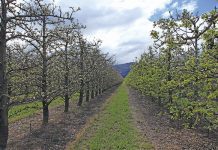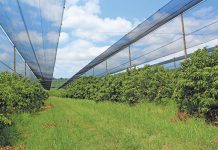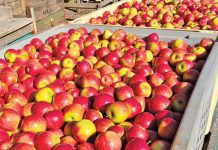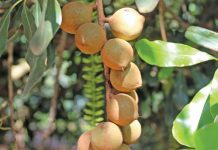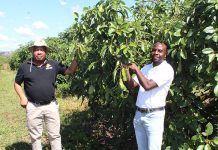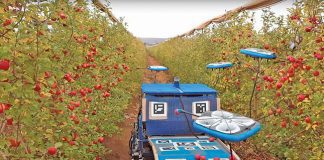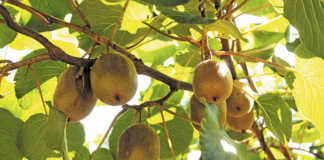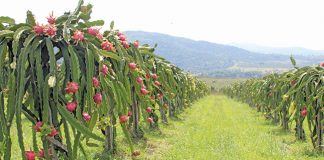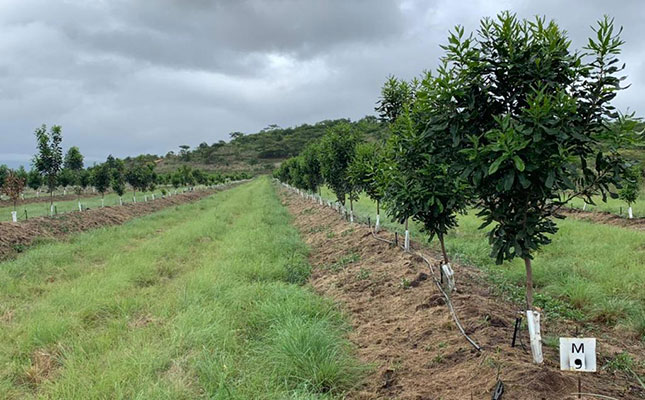
Photo: Lindi Botha
The macadamia industry has offered highly attractive investment opportunities during the past few years. With prices increasing significantly and an apparently insatiable demand, the crop has provided good returns for farmers in the Lowveld of Limpopo and Mpumalanga, and on KwaZulu-Natal’s (KZN) South Coast.
Now, as uncertainty about the continued profitability of the sugar industry prevails, farmers further north in KZN are expanding their farms to include nut orchards.
Boosting the prospects for this industry is the ever-growing number of processing facilities for macadamias in Pongola, northern KZN. The investment from industry role players is perhaps the biggest indication of the potential of macadamias in this region.
AmberMacs has a facility where nuts can be delivered and then sent to Mpumalanga for further processing. Marquis Macadamias has gone one step further, erecting a full nut-in-shell processing facility in the area.
South Africa’s macadamia industry is expanding by over 3 000ha/year and the planted area has reached around 30 000ha. While Pongola’s 2 000ha may seem small, the farmers here have only recently begun planting macadamias, and most trees are not yet in production.
With much more arable land available, this region is set to become one of the largest for macadamia production in the country.
Mega-farmer Charl Senekal, the biggest sugar cane producer in South Africa, believes that macadamias present a valuable opportunity not only for sugar cane producers, but for marginalised farmers too.
“Makatini Flats, adjacent to Pongola, has over 2 000ha of prime soil that would be ideal for macadamia cultivation. The group of farmers there have expressed a lot of interest, but they require government support and the correct extension officers who can provide them with the right knowledge. Macadamias are far simpler to farm than citrus, so the nuts present a very good opportunity for these farmers.”
Senekal himself has started planting macadamias on unused fields, and although he isn’t planning to replace all his sugar cane with nuts, he has big plans for expansion.
“We have 60ha in the ground and there’s potential to expand by another 2 000ha. With sugar prices not faring very well, and the potential of the nut industry, I believe now is a good time to invest in macadamias.”
Relief for sugar farmers
While farmers are cautiously optimistic about the future of the macadamia industry and its ability to provide stable prices over the long term, Senekal thinks that the potential of the crop to fit into a wide range of value-added products means that it will stay in demand if marketed correctly.
Sharing his optimism, Sedrich Moore, owner of Northern Sugar Estate, says that macadamias are providing a welcome relief for sugar cane growers, who are feeling the pressure of reduced tonnage allocations from the local mill.

“Seven years ago, there were talks that the local mill was going to cut the amount of sugar we could deliver to it. We immediately decided to plant the open land we had to macadamias so that we’d have an alternative source of income.”
Moore adds that many farmers in the area have adopted this approach.
“While the mill didn’t cut back on quotas over the past seven years, the fear that they will do so in future remains. Since farmers can’t deliver less than their quota allocation without being penalised, sugar land is not being reduced as yet. But any spare land that farmers have is being planted to macadamias, especially because the nuts take at least five years to come into production, so planting now means there’ll be an income then.”
Moore also sees the addition of macadamias as adding value to his property. His first orchard took up 70ha and he has since increased the area under macadamias to 152ha. His aim is to reach 200ha.
“Our sugar quotas will be cut at some point; we just don’t know when and by how much. There’s a lot of uncertainty in the sugar industry, and macadamias are a light at the end of the tunnel.”
He highlights another benefit of macadamia production over sugar: water savings. “Besides the actual needs of the macadamia crop, which are far less than those for sugar, the method of irrigation generally applied means that far less water is used. Most sugar farmers use pivot irrigation, while macadamias use micro or drip. The dam levels don’t sink nearly as quickly when you irrigate macadamias.”
However, Pongola’s farmers don’t foresee that sugar will disappear completely from the landscape. The mill will require a set amount of sugar, and keeping it in business remains a community priority. “Having 15 000ha of sugar in Pongola is ideal to keep the mill in business, which means that people retain their jobs and the local economy isn’t affected. Sugar won’t disappear from Pongola,” says Moore.
One aspect that is bound to dampen macadamia growth, however, is the high cost of entry. Apart from the long wait before the trees deliver a crop, establishment costs can be prohibitive.
The costs of soil preparation, the trees themselves, and the irrigation system mean that many sugar farmers cannot make the switch overnight. While the price of macadamias is higher than that of sugar, the first four years of macadamia production deliver no income at all, and Moore therefore believes the returns even out.
How much longer?
“Another concern, of course, is whether macadamia prices will hold or if it’s a bubble that may burst. We’ve erected a packhouse big enough to ensure further expansion on our farm, so we’re cautiously optimistic. And many others are jumping in with the same mindset,” says Moore.
Just as South African farmers have recognised the opportunities in the nut market, so too have farmers elsewhere. In Malawi, Eswatini and Australia, macadamia nut orchards are also making inroads into sugar cane fields. Global macadamia output is expected to triple over the next decade, reaching 600 000t in 2032. With this anticipated growth, the question over the sustainability of favourable pricing has been raised.
“The growth in the industry does sound daunting,” says Marquis Macadamias director Roelof van Rooyen, “but it’s exactly [what’s needed] to bring more certainty to the industry in the medium to long term. Industries such as citrus, avocados and apples went through the same growing pains. Our industry will go from being niche to being bigger, commercial and consolidated as the volumes grow.”
At the heart of this success is a marketing strategy that calls for consistent quality across all nut sales. “Being able to supply big volumes of high-quality, standardised macadamias will give the market confidence to develop new products and make macadamias part of their staple line of products. This will bring stability to prices as the world heads towards huge crop increases.”
Van Rooyen believes that the marketing of macadamias requires a high level of sophistication, and unless the industry keeps up, it will be a race to the bottom to offload product.
“When your product is in high demand, marketing is easy and can be a function that’s neglected in a company’s development strategy. But when volumes start growing rapidly and are not matched by strategic marketing, prices can fall through the floor as sellers sit with too much product and nowhere to go. The key to maintaining sustainability is to grow demand with supply. This means we have to work harder than ever to spot market trends. We also need to develop new products and find innovative ways to sell nuts much faster.”
Market trends over the past five years indicate that macadamia products are ideally positioned to capitalise on the plant-based protein movement. Macadamia nut milk, butter and cheese cater for people who are lactose-intolerant. With much growth expected in this market segment, there are a host of opportunities for macadamias.
Quality sells
Macadamias have gained a reputation as the ‘queen’ of nuts, not only because of the higher prices they fetch, but for their buttery, luxurious flavour. Price aside, no consumer wants a bad eating experience, and as concerns over increasing pest loads in orchards grow, so too do concerns that farmers will be producing a poorer-quality crop.
“Six years ago, demand for macadamias outstripped supply,” recalls Van Rooyen.
“[So] nuts of varying quality could still find a market at a decent price. In today’s market, quality is paramount and, what’s more, it means different things to different consumers. To some, it means that the nuts have been farmed organically. To others, it means that the carbon footprint is low, while others just want a good eating experience. Farmers and processors need to bear all this in mind when considering the macadamia nut market of the future.”
Farming and processing macadamias require skill and investment in technology to meet these needs. This includes colour sorters, pasteurisation technology and factory flow systems to ensure that the nuts are handled with care. It also means an expansion of services in the areas where macadamias are farmed, hence Marquis Macadamias’ investment in Pongola.
“Growers require access to experts on the ground to assist with technical advice for maximising profits and increasing sustainability,” says Van Rooyen.
“It takes a high level of sophistication to get new products off the ground. Those who source ingredients want to know that nuts have been farmed and processed responsibly, ethically and safely. The more uniform and consistent the nuts, the easier it will be to create the confidence needed for product development. Farmers need to pay more attention to quality, because if buyers have more choice, quality nuts will always sell themselves, even if there are large volumes on the market.”
Email Charl Senekal at [email protected], Sedrich Moore at [email protected], or Roelof van Rooyen at
[email protected].


